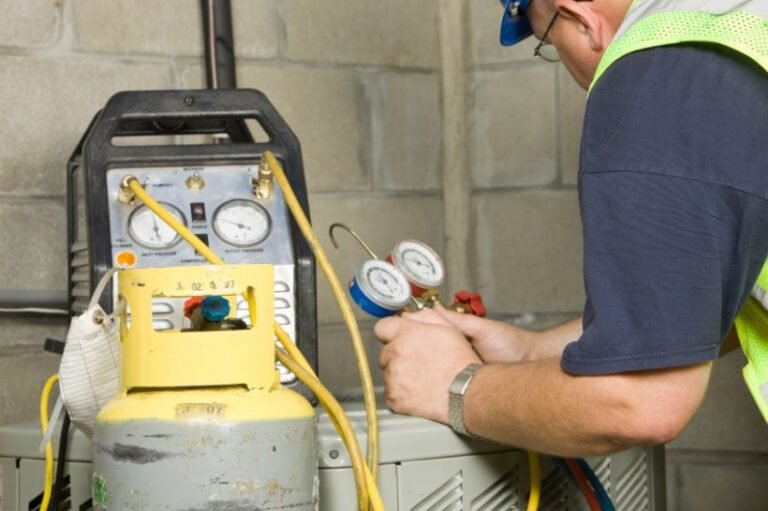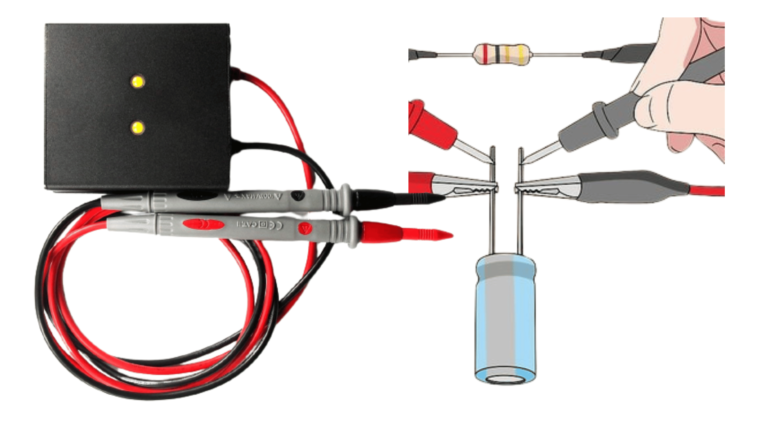How to Safely Remove Freon from Window Air Conditioner: Expert Guide
To remove freon from a window air conditioner, follow these steps: turn off the unit, locate the service valves, attach a refrigerant recovery system, and release the freon safely. Removing freon from a window air conditioner is a simple process that can be done with the right tools and knowledge.
We will discuss how to remove freon from a window air conditioner and provide step-by-step instructions for a safe and effective removal. Whether you are replacing the unit or disposing of it, it is important to properly remove the freon to prevent any harm to the environment.
Read on to learn more about the process and how to do it correctly.
Understanding Window Air Conditioner Components
Understanding the basic components of a window air conditioner is crucial when it comes to removing freon. The window air conditioner consists of several essential parts that work together to provide cooling. These components include the compressor, condenser coil, evaporator coil, expansion valve, and the refrigerant. The compressor plays a key role in pressurizing and pushing the refrigerant, which is usually freon, through the system.
The role of freon in the cooling process is to absorb heat from the indoor air and release it outdoors. As the freon passes through the evaporator coil, it evaporates, absorbing heat and moisture from the room. It then moves to the condenser coil, where it condenses and releases the heat outdoors.
When it comes to removing freon from a window air conditioner, it is important to follow the recommended guidelines to ensure safety and avoid any environmental damage. Professional assistance may be required to handle the freon removal process properly.
Preparing For Freon Removal
Preparing for the removal of Freon from a window air conditioner requires taking the necessary safety precautions and gathering the appropriate tools. Safety should always be the top priority to prevent any accidents or health risks. It is essential to wear protective gear such as gloves, safety goggles, and a mask to avoid contact with the refrigerant.
Gathering the necessary tools and equipment is crucial for a successful Freon removal process. Some of the tools you may need include a recovery machine, a refrigerant manifold gauge set, a vacuum pump, and a recovery tank. These tools will help you safely and efficiently remove the Freon from the air conditioner.
In addition to the tools, it is also important to have a recovery tank that meets the legal requirements for handling and storing refrigerants. Make sure to follow the guidelines and regulations set by the Environmental Protection Agency (EPA) for the proper handling and disposal of refrigerants.
Step-by-step Guide For Safe Freon Removal
Removing Freon from a window air conditioner is an important step in maintaining the equipment and ensuring proper disposal of harmful refrigerants. Follow these step-by-step instructions to safely remove Freon from your window AC unit:
Step 1: Begin by turning off the air conditioner to avoid any accidents or injuries during the Freon removal process.
Step 2: Locate the service valves on the AC unit. These valves are typically found on the refrigerant lines near the compressor.
Step 3: Attach a manifold gauge set to the service valves. This will allow you to measure the pressure levels of the system.
Step 4: Open the low-pressure service valve on the gauge set to release the Freon from the AC unit.
Step 5: Use a Freon collection device to safely collect the released Freon. Ensure that you follow all safety guidelines for handling and storing the refrigerant.
Step 6: Dispose of the collected Freon properly according to local regulations and guidelines to prevent any harm to the environment.
Troubleshooting Common Issues
Identifying leaks or blockages in your window air conditioner is essential before attempting to remove Freon. Start by visually inspecting the unit for any obvious signs of leaks, such as oil stains or discoloration on the tubing or connections. You can also use a leak detection tool to help identify the source of a leak. Additionally, check for any blockages in the refrigerant lines or coils, which can hinder Freon removal. Fixing minor problems before removing Freon can prevent further damage to your air conditioner. Clean or replace any clogged filters and ensure that the condenser and evaporator coils are free of debris. Check the fan motor and blades for any obstructions. By addressing these minor issues, you can optimize the efficiency of your window air conditioner and prolong its lifespan.
Leakage Detection Techniques
Freon leakage in a window air conditioner can be a cause for concern as it not only affects the cooling efficiency but can also be harmful to the environment. It is important to detect and fix the leakage as early as possible. One of the simplest and commonly used techniques is visual inspection. This involves carefully examining the unit and looking for any signs of oil stains, ice buildup, or greasy residue, which may indicate a leak.
Another technique is the soap bubble test. This involves applying a solution of soapy water to the suspected area and looking for bubbles forming, which indicate a leak. It is a reliable and inexpensive method that can be performed at home.
The electronic leak detector is a more advanced and accurate technique. It uses sensors to detect the presence of Freon and indicates the location of the leak. This method is commonly used by professionals and can quickly identify even small leaks.
Clearing Blockages
To remove freon from your window air conditioner, you need to ensure that any blockages are cleared. Start by cleaning the refrigerant lines to ensure they are free from any debris or obstructions that may hinder the flow of freon. This can be done by using a soft brush or vacuum to remove any dirt or dust buildup. Alternatively, you can use a specialized cleaner to dissolve and remove any stubborn blockages.
In addition to cleaning the refrigerant lines, it is important to check the condenser coils for any dirt or debris. Dirty coils can restrict the flow of freon and decrease the efficiency of your air conditioner. Use a coil cleaner or a mild detergent solution and a soft brush to gently clean the coils. Ensure that you rinse off all the cleaning solution thoroughly before reassembling your air conditioner.
By following these steps, you can effectively remove freon from your window air conditioner and ensure its optimal performance.
Understanding Legal And Environmental Regulations
Freon, which is commonly used as a refrigerant in window air conditioners, needs to be removed carefully to comply with legal and environmental regulations. There are specific laws and regulations in place that govern the removal and disposal of Freon to ensure the safety of individuals and the well-being of the environment.
When it comes to the regulations pertaining to Freon removal, it is crucial to understand the proper procedures and methods. These regulations vary by location and may require individuals to hold appropriate certifications or licenses for handling and removing refrigerants safely. It is essential to familiarize oneself with the local laws and regulations to ensure compliance and avoid any legal issues.
In addition to the legal aspects, the proper disposal of Freon is equally important. Freon cannot be released into the atmosphere due to its harmful effects on the ozone layer. It must be extracted and disposed of responsibly. This can be done by contacting authorized recycling facilities or qualified professionals who specialize in refrigerant recovery and disposal.
:max_bytes(150000):strip_icc()/why-window-air-conditioners-freeze-up-1152665-hero-aa2e8377fd8a4f6fa22dd875cbeca2d0.jpg)
Credit: www.thespruce.com
Frequently Asked Questions For How To Remove Freon From Window Air Conditioner
Q: What Is Freon And Why Should It Be Removed From A Window Air Conditioner?
A: Freon is a refrigerant used in air conditioners that is harmful to the environment. Removing it ensures proper disposal and prevents it from contributing to ozone depletion.
Q: How Can I Tell If My Window Air Conditioner Contains Freon?
A: Look for the label on your air conditioner that indicates the type of refrigerant used. If it says R-22 or Freon, then it contains Freon.
Q: What Are The Steps To Remove Freon From A Window Air Conditioner?
A: To remove Freon, you will need to turn off the air conditioner, disconnect the power, locate the service valve, attach a refrigerant recovery unit, drain the Freon into a recovery tank, and dispose of it properly.
Q: Can I Remove Freon From My Window Air Conditioner Myself?
A: Removing Freon requires expertise and special equipment. It is recommended to hire a certified HVAC technician to safely remove and dispose of the Freon.
Conclusion
Removing Freon from a window air conditioner can be done safely and effectively by following the steps outlined in this guide. By taking proper precautions and using the appropriate equipment, you can ensure the proper disposal of the refrigerant and protect the environment.
Remember to always consult a professional if you are unsure or uncomfortable with the process. Don’t let this task overwhelm you, with a little knowledge and caution, you can successfully remove Freon from your window air conditioner.






